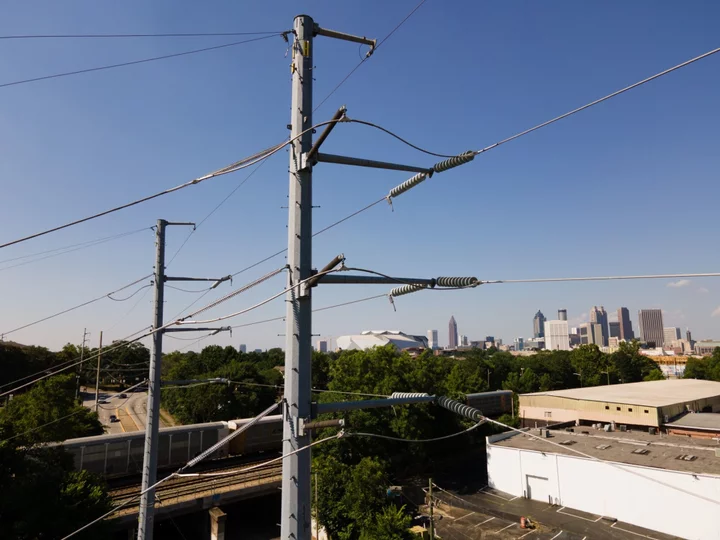The risk of summer blackouts from heat waves has extended into the US Southeast and Ontario for the first time, according to the regulatory body overseeing power grid stability, in a sign of spreading threats to electrical systems in the US and Canada.
The new at-risk areas are identified in the North American Electric Reliability Corp.’s summer assessment and marks the agency’s most expansive warning yet on threats to the continent’s power networks. NERC also stressed that widespread heat could limit the western US from transferring electricity within the region, further crimping supplies.
Read More: Blackouts Loom for Most of US in Extreme Summer-Heat Scenario
In a normal summer, grid networks are expected to hold up with sufficient supply to meet demand from June to September, according to the report published Wednesday. But electricity supplies from the US west coast to Georgia, along with parts of New England and Canada’s most-populous province may fall short when above-normal temperatures coincide with soaring demand and unexpectedly high power-plant outages.
Here’s a breakdown of key regions at risk under elevated conditions:
- The central Southeast region, including Tennessee and parts of five neighboring states, joins NERC’s risk list because peak demand is expected to jump by about 950 megawatts — the equivalent of a nuclear plant — with little change to supply.
- The Midcontinent Independent System Operator, which serves about 42 million customers from the US Gulf Coast to Canada, faces shortages due to fossil-fuel plants closures in recent years.
- New England’s grid has less power supplies than last summer and will likely need to rely on emergency resources or tap neighbors to manage tight periods.
- The Texas grid operator faces a 19% probability of declaring an emergency to shore up supplies and meet the highest needs at 8 p.m. local time, when demand surges and solar isn’t available.
- Western US states are at highest risk when widespread heat limits regional power transfers or if wildfires force power lines out of service, especially in the evening when there isn’t solar power
- Ontario will need to rely significantly on imports to meet demand in normal and extreme summer conditions due to a planned outage for nuclear-plant refurbishment and strains on transmission lines
- Performance of wind generators in periods of high demand will be key in determining whether three grids stretching from Texas to the Great Lakes will become strained enough to declare energy emergencies.
Author: Naureen S. Malik









